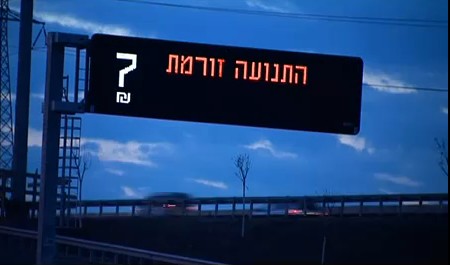The 65 km trip from Jerusalem to Tel Aviv used to take two days on a donkey from biblical days to the 20th century. Then it went down to 3 hours by car in the fifties, then 2 hours, and finally below 60 minutes on the Highway 1 six-lane freeway. Then people bought more cars, and we’re back to 2 hours in the rush hour…
Enter the Fast Lane, which opened last week. This is an added lane on the last 13 km before Tel Aviv. It is open for free to car pools and public transport, and has a Park-and-Ride facility to boot. And all this is funded by tolls collected from the rest of us if we choose to use it.
But what happens in the rush hour, when everyone might want to use the new lane, bringing it to a standstill?
This is where the ingenuity shows. The toll is variable: it is posted on a large electronic sign ahead of the on ramp. When demand is low, it’s a reasonable 7 Shekels (about $2). When the lane fills up, it grows gradually up to a whopping 75 Shekels – more than enough to deter most drivers. The parameter defining the price is the speed of traffic flow in the fast lane itself, which is measured automatically at any moment; by using this to set the cost, a minimum speed of 70 kph is guaranteed by the company running the lane.
Here is the sign – in addition to a 7 Shekel price, it informs that traffic ahead is flowing (hence the low toll).
To an engineer, this is an obvious application of negative feedback to control a system; but it is rare to see such an elegant application of this concept where something as unpredictable as traffic congestion is controlled by a feedback loop incorporating automatic sensors and the trade-off between the factors of human impatience and human parsimony…







1 Response to “An ingenious feedback loop”